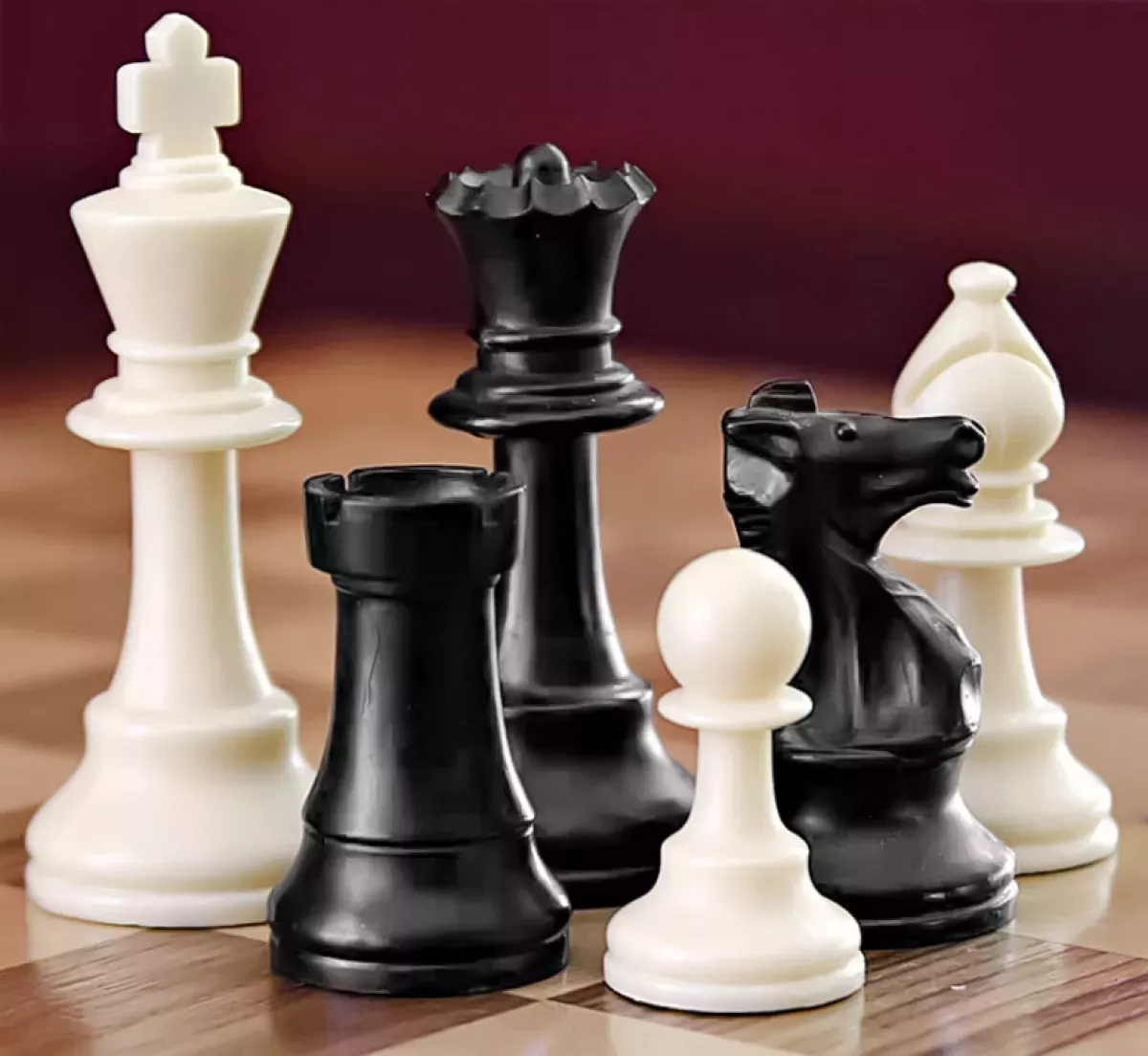1913: Ernst Zermelo and Game Theory in Chess
In 1913, Ernst Zermelo used chess to develop his theory of game strategies, a precursor to modern game theory. Zermelo's theorem suggests that chess can be solved, meaning the outcome of a perfectly played game can be predicted. However, the vast number of possible chess positions makes finding a perfect strategy with current technology impossible.
1913: H.J.R. Murray's Estimate of Chess Literature
In 1913, chess historian H.J.R. Murray estimated that the world of chess had produced approximately 5,000 books, magazines, and newspaper columns dedicated to the game, indicating a substantial body of chess literature at the time.
1914: Disputed First Formal Conferring of Grandmaster Title
The year 1914 is marked by a disputed claim in chess history. Some sources suggest that Tsar Nicholas II of Russia formally conferred the title of chess Grandmaster to five prominent players: Emanuel Lasker, José Raúl Capablanca, Alexander Alekhine, Siegbert Tarrasch, and Frank Marshall. However, this claim remains a subject of debate among chess historians.
1916: Start of Capablanca's Undefeated Streak
José Raúl Capablanca, a Cuban chess prodigy, began an eight-year-long undefeated streak in tournament play in 1916, cementing his reputation as one of the game's strongest players.
1921: Capablanca Becomes World Chess Champion
José Raúl Capablanca, renowned for his exceptional endgame skills, achieved a significant milestone in 1921 by winning the World Chess Championship from Emanuel Lasker.
1924: End of Capablanca's Undefeated Streak
José Raúl Capablanca's impressive eight-year undefeated streak in tournament chess came to an end in 1924, marking the conclusion of a dominant period in his chess career.
1924: First Chess Olympiad and Founding of FIDE
The year 1924 marked a significant milestone in the world of chess with the organization of the first Chess Olympiad, held in Paris. This event also led to the establishment of FIDE (Fédération Internationale des Échecs), initially with the purpose of managing the Olympiad.
1927: Alekhine Becomes World Chess Champion
Alexander Alekhine, a formidable Russian-French chess player known for his aggressive attacking style, became the World Chess Champion in 1927, succeeding José Raúl Capablanca.
1927: Beginning of Research on Chess Skill and Intelligence
Formal academic studies exploring the connection between chess skill and intelligence began in 1927. While studies on children often show a positive correlation between chess skill and cognitive ability, results from studies on adults have been less consistent.
1927: Establishment of Women's World Chess Championship
In 1927, the Women's World Chess Championship was established, marking a significant step in recognizing and promoting women's chess. Vera Menchik, a Czech-English master, became the first woman to hold this prestigious title.
1935: Alekhine Loses World Chess Title to Max Euwe
In a surprising turn of events, Alexander Alekhine, the reigning World Chess Champion, lost his title to Dutch player Max Euwe in 1935.
1946: Death of Alexander Alekhine
The chess world mourned the loss of Alexander Alekhine in 1946. He died as the reigning World Chess Champion, leaving behind a legacy as a brilliant and influential player.
1948: Mikhail Botvinnik Wins World Chess Championship
In 1948, Mikhail Botvinnik emerged victorious in the World Chess Championship tournament, marking the beginning of a period of Soviet dominance in the chess world.
1948: FIDE Assumes Control of World Chess Championship
In a significant development for the world of chess, FIDE (Fédération Internationale des Échecs) assumed the responsibility of organizing the World Chess Championship in 1948.
1949: B.H. Wood's Estimate of Chess Literature
By 1949, chess literature had seen significant growth. B.H. Wood, a prominent figure in the chess world, estimated that the number of chess publications had increased to around 20,000, signifying the continued expansion of chess knowledge and analysis.
1950: Claude Shannon's Seminal Paper on Computer Chess
In 1950, Claude Shannon published "Programming a Computer for Playing Chess," a groundbreaking work that laid the foundation for computer chess. This paper marked the beginning of serious efforts to create chess-playing machines.
1950: FIDE Establishes System of Chess Titles
In 1950, FIDE (Fédération Internationale des Échecs) took a significant step in formalizing chess titles by establishing a system for awarding them. As part of this new system, 27 players were awarded the prestigious title of Grandmaster.
1951: Botvinnik Retains World Chess Title
Mikhail Botvinnik successfully defended his world championship title in 1951 in a tied match, further solidifying his position as the world's leading chess player.
1954: Botvinnik Retains World Chess Title
Mikhail Botvinnik, demonstrating his continued dominance, retained his world championship title once again in 1954 by drawing his match, highlighting his consistency at the highest level of chess.
1957: Botvinnik Loses World Chess Title to Smyslov
In 1957, Mikhail Botvinnik's reign as World Chess Champion came to an end when he lost his title to Vasily Smyslov, marking a shift in the balance of power within the chess world.
1958: Botvinnik Regains World Chess Title
Displaying his resilience and determination, Mikhail Botvinnik reclaimed the World Chess Championship title in 1958 by winning the rematch against Vasily Smyslov, reaffirming his mastery over the game.
1960: Botvinnik Loses World Chess Title to Tal
In a clash of chess titans, Mikhail Botvinnik faced a formidable opponent in the 23-year-old Latvian prodigy Mikhail Tal. Known for his exceptional tactical skills and aggressive playing style, Tal emerged victorious in 1960, becoming the new World Chess Champion.
1961: FIDE Abolishes Automatic Rematch for World Chess Championship
In 1961, FIDE introduced a significant change to the rules of the World Chess Championship by abolishing the automatic right of a deposed champion to a rematch. This decision aimed to create a more competitive environment and prevent prolonged periods of dominance by a single player.
1961: Botvinnik Regains World Chess Title
Mikhail Botvinnik demonstrated his enduring chess prowess in 1961 by winning the rematch against Mikhail Tal, reclaiming the World Chess Championship title and showcasing his ability to bounce back from setbacks.
1963: Petrosian Becomes World Chess Champion
Tigran Petrosian, an Armenian chess grandmaster renowned for his exceptional defensive and positional skills, became the World Chess Champion in 1963, ushering in an era characterized by strategic depth and positional mastery.
1969: Spassky Becomes World Chess Champion
In 1969, Boris Spassky, a highly skilled Soviet chess grandmaster known for his versatile style encompassing both positional understanding and sharp tactical ability, became the World Chess Champion, succeeding Tigran Petrosian.
September 1970: First Major Computer Chess Tournament
The Association for Computing Machinery (ACM) organized the first significant chess tournament exclusively for computers, the North American Computer Chess Championship, in September 1970, with CHESS 3.0 emerging as the winner.
1970: First Major Computer Chess Tournament
The first significant computer chess tournament, the North American Computer Chess Championship, was held in 1970, marking a milestone in the development of computer chess.
1972: Fischer Becomes World Chess Champion
Bobby Fischer, an American chess prodigy, made history in 1972 by defeating Boris Spassky in a highly anticipated match to become the World Chess Champion. This event, dubbed the "Match of the Century," captivated global audiences and elevated chess to new heights of popularity.
1973: Invention of Digital Chess Clocks
While not widely used until the 1990s, digital chess clocks, enabling time controls with increments and delays, were invented in 1973.
1974: First World Computer Chess Championship
The inaugural World Computer Chess Championship took place in 1974, further fueling the advancement of chess-playing programs.
1975: Karpov Becomes World Chess Champion
Following Bobby Fischer's refusal to defend his title under FIDE regulations, Anatoly Karpov, a formidable Soviet chess grandmaster, was awarded the World Chess Championship title by default in 1975, marking the beginning of his reign as champion.
1975: Fischer Loses World Chess Title
In 1975, Bobby Fischer forfeited his World Chess Championship title after refusing to defend it against Anatoly Karpov due to disagreements with FIDE over match conditions. This decision marked an unexpected end to Fischer's reign as champion and sparked controversy within the chess community.
1978: Nona Gaprindashvili First Woman to Earn Open GM Title
In 1978, Nona Gaprindashvili made history by becoming the first woman to earn the open Grandmaster (GM) title, breaking down barriers in the world of professional chess.
1979: Chess Prohibition by Ruhollah Khomeini
In 1979, Ayatollah Ruhollah Khomeini, the leader of the Iranian Revolution, declared chess a forbidden activity, highlighting the game's sometimes controversial relationship with religious authorities.
1980: Decline of Descriptive Notation
Around 1980 marked a turning point in chess notation. Before this period, the majority of English language chess publications used descriptive notation. However, its use started to decline as algebraic notation gained popularity.
1984: World Chess Championship
The 1984 World Chess Championship saw Anatoly Karpov, the reigning champion, face off against Garry Kasparov. The match was mired in controversy, ultimately ending prematurely after 5 months and 48 games with Karpov leading but exhausted.
1985: World Chess Championship Rematch
Garry Kasparov won the 1985 World Chess Championship rematch against Anatoly Karpov, marking the start of Kasparov's reign in the chess world.
1986: World Chess Championship
Garry Kasparov and Anatoly Karpov had their second world championship match in 1986, with Kasparov emerging victorious once again.
1987: World Chess Championship
The 1987 World Chess Championship was another closely contested match between Garry Kasparov and Anatoly Karpov, with Kasparov solidifying his dominance.
1987: First Commercial Chess Database
The year 1987 saw the introduction of the first commercial chess database by ChessBase, a German company. This database, containing a searchable collection of chess games, revolutionized opening theory and chess research.
1990: World Chess Championship
In 1990, Garry Kasparov defended his World Chess Championship title against Anatoly Karpov for the fourth and final time, cementing his status as a dominant figure in chess.
1991: Publication of Six-Piece Endgame Tablebase
Lewis Stiller's publication of a tablebase for select six-piece endgames in 1991 was a significant step towards solving chess endgames.
1992: First Internet Chess Server
The University of Utah developed the first internet chess server, ICS, in 1992, ushering in a new era of online chess.
1993: Formation of the Professional Chess Association
Garry Kasparov and Nigel Short broke away from FIDE in 1993 to form the Professional Chess Association (PCA), leading to a split in the World Chess Championship.
1995: First Commercial Chess Server
Building upon ICS, the first commercial chess server, the Internet Chess Club, was launched in 1995, making online chess more accessible.
1997: Deep Blue defeats Garry Kasparov
In 1997, the IBM supercomputer Deep Blue made history by becoming the first computer to defeat a reigning World Chess Champion in a match when it won against Garry Kasparov.
2000: Vladimir Kramnik Becomes PCA World Champion
Vladimir Kramnik defeated Garry Kasparov in 2000 to become the PCA World Chess Champion, ending Kasparov's reign.
2005: Garry Kasparov Retirement
After a long and illustrious career, Garry Kasparov retired from competitive chess in 2005, leaving behind a legacy as one of the game's greatest players.
2005: Convincing Computer Victories in Chess
By 2005, computer chess programs had advanced significantly, achieving convincing victories against top human players. This marked a turning point where human-computer chess matches became less interesting for both players and the media.
2005: Publication of Nalimov Tablebases
With the release of Nalimov tablebases in 2005, all six-piece endgame positions were effectively solved, enhancing the precision of chess engines.
2006: Reunification of the World Chess Championship
The World Chess Championship was reunified in 2006 when Vladimir Kramnik defeated FIDE World Champion Veselin Topalov, ending the split that began in 1993.
2006: Continued Dominance of Computers in Chess
The dominance of computers in chess continued in 2006, solidifying their superiority over even the strongest human chess players.
2006: Kramnik Wins Unified Title
Vladimir Kramnik won the unified World Chess Championship title in 2006, defeating FIDE World Champion Veselin Topalov.
September 2007: Viswanathan Anand Becomes World Chess Champion
Viswanathan Anand became the undisputed World Chess Champion in September 2007 after winning the championship tournament in Mexico City, succeeding Vladimir Kramnik.
2008: Anand Defends Title
Viswanathan Anand successfully defended his World Chess Championship title in 2008, solidifying his position as the world's best player.
2009: Mobile Phone Wins Chess Tournament
In 2009, a mobile phone running the chess engine Hiarcs 13 won the Copa Mercosur, a category 6 chess tournament. This victory demonstrated the growing power and sophistication of chess engines, even on mobile devices.
2010: Anand's Continued Dominance
Anand defended his World Chess Championship title again in 2010, demonstrating his sustained excellence in the chess world.
2012: Publication of Lomonosov Tablebases
Lomonosov tablebases, published in 2012, provided solutions for all seven-piece endgame positions, further solidifying the understanding of chess endgames.
2012: Anand's Third Successful Title Defense
Viswanathan Anand secured his third consecutive World Chess Championship title defense in 2012, further cementing his legacy as a chess great.
2013: Magnus Carlsen Becomes World Chess Champion
Magnus Carlsen emerged victorious in the 2013 World Chess Championship, defeating Viswanathan Anand and beginning his reign as the world champion.
March 2014: Magnus Carlsen Achieves Highest FIDE Rating
In March 2014, Magnus Carlsen achieved a historic milestone by reaching a FIDE rating of 2882, the highest ever recorded on the FIDE rating list.
2014: Carlsen Defends Title
Magnus Carlsen successfully defended his World Chess Championship title in 2014, solidifying his status as the top player in the world.
2016: Carlsen's Second Title Defense
Magnus Carlsen defended his World Chess Championship title for the second time in 2016, further extending his dominance in the chess world.
2017: Introduction of AlphaZero
The year 2017 saw the introduction of AlphaZero, a revolutionary neural network capable of playing chess, shogi, and Go. AlphaZero's advanced play and novel strategies significantly influenced top-level chess.
2018: Carlsen's Third Title Defense
Magnus Carlsen achieved his third successful World Chess Championship title defense in 2018, solidifying his place among the chess elite.
October 2020: The Rise of Online Chess During the COVID-19 Pandemic
Online chess experienced a surge in popularity during the COVID-19 pandemic, particularly after the release of the Netflix series "The Queen's Gambit" in October 2020. This popularity was attributed to lockdowns and increased interest in the game. Chess app downloads, online platform registrations, and the number of games played significantly increased. The demographics of players also shifted, with a higher proportion of female players joining online platforms.
2020: Online Chess as an Esport
Following the 2020 online chess boom, online chess gained recognition as an esport, with esports teams signing professional chess players for the first time.
2020: The 2020 Online Chess Boom
Fueled by the COVID-19 pandemic, the success of "The Queen's Gambit," and the rise of chess streamers, 2020 witnessed a surge in online chess's popularity, solidifying its place alongside over-the-board chess.
2021: Carlsen's Fourth Title Defense and Announcement
Magnus Carlsen successfully defended his World Chess Championship title for the fourth time in 2021. However, he also announced his decision not to defend the title again, paving the way for a new champion.
2022: Candidates Tournament Determines Challengers
The 2022 Candidates Tournament determined the challengers for the 2023 World Chess Championship. Ian Nepomniachtchi and Ding Liren emerged as the winner and runner-up, respectively, earning the right to compete for the title.
July 2023: 40 Women Achieved Open GM Title
As of July 2023, a total of 40 women have earned the prestigious open Grandmaster (GM) title in chess, reflecting a growing presence of women at the highest level of the game.
2023: Ding Liren Becomes World Chess Champion
Ding Liren of China won the 2023 World Chess Championship, defeating Ian Nepomniachtchi to become the new world champion following Magnus Carlsen's decision not to defend the title.
2023: FIDE Chess Rules Revision
In 2023, FIDE (Fédération Internationale des Échecs), the governing body for chess, published its most recent revision to the official rules of chess.
Mentioned in this timeline
China officially the People's Republic of China PRC is an...

Mexico City is the capital and largest city of Mexico...
Russia officially the Russian Federation is a transcontinental country spanning...

Magnus Carlsen is a Norwegian chess grandmaster widely considered one...
Mexico officially the United Mexican States is a North American...

September is the ninth month of the year in the...
Trending

Tim Walz is an American politician educator and Army National Guard veteran currently serving as the st Governor of Minnesota...
2 months ago Blinkova and Salkova to face off at the 2025 Jiangxi Open.

2 months ago Alcaraz Rallies to Victory Against Fritz, Closing in on No. 1 Ranking

3 months ago Emma Navarro vs. Shuai Zhang: WTA Wuhan Open 2025 Match Prediction and Preview

2 months ago Deandre Ayton's Impact: Lakers' Undefeated Streak and His Drive After OKC Loss.

1 month ago Deshaun Watson Returns to Browns Practice After Achilles Injury: 21-Day Window Opens
Popular

Stranger Things created by the Duffer Brothers is a popular...

XXXTentacion born Jahseh Dwayne Ricardo Onfroy was a controversial yet...

Kelsey Grammer is an accomplished American actor producer and singer...

Candace Owens is an American conservative political commentator and author...

Bernie Sanders is a prominent American politician currently serving as...

Melania Trump a Slovenian-American former model has served as First...
